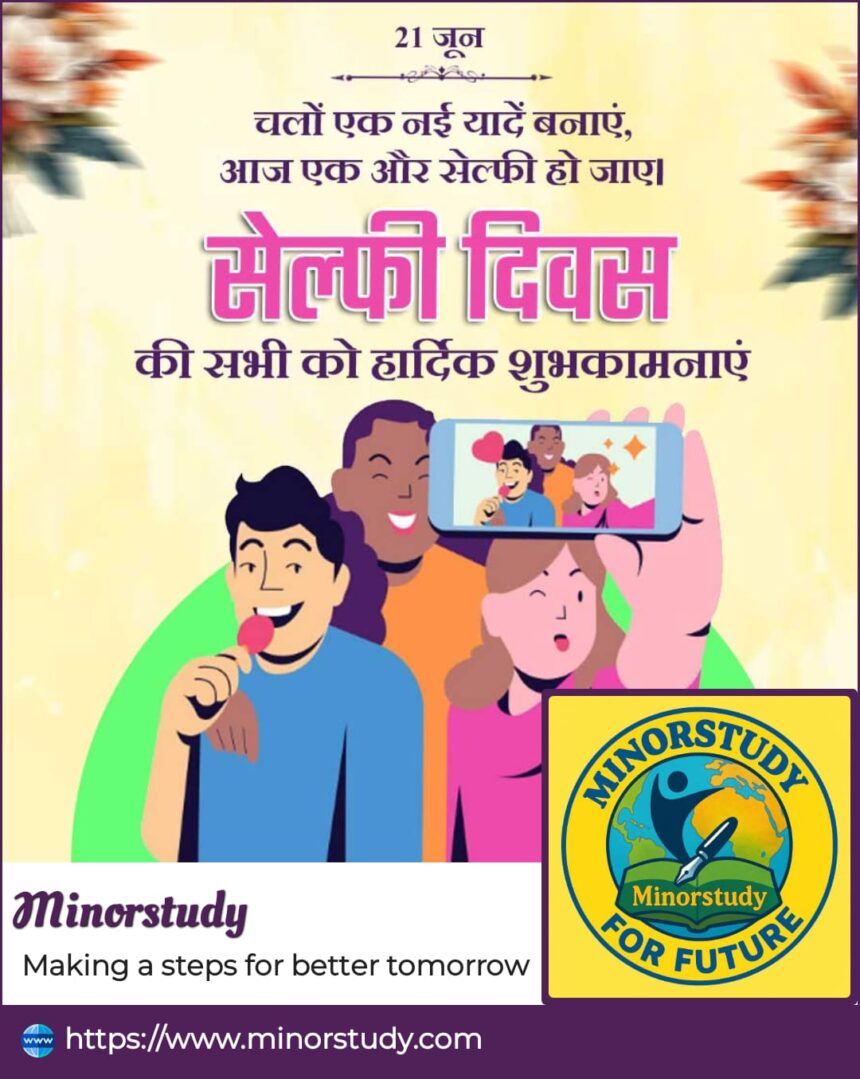📸 Introduction: Say Cheese, It’s Selfie Day!
In an era where digital expression defines personal presence, Selfie Day is more than a casual scroll-stopper. It’s a celebration of self-love, technology, identity, and community. Observed on June 21st, Selfie Day encourages individuals worldwide to snap a photo of themselves, not just for social media, but as a fun reminder of how far digital communication and self-expression have come.
- 📸 Introduction: Say Cheese, It’s Selfie Day!
- 🕰️ History of Selfie Day
- 📚 Fun Facts About Selfie Day
- ❓ FAQs: All About Selfie Day
- 🗓️ Timeline: Evolution of the Selfie
- 🎯 Significance of Selfie Day
- 🙌 Observing Selfie Day: How to Celebrate
- 💡 Important Points to Remember
- 🎉 Wishing You a Happy Selfie Day!
- 🌍 Importance in Our Life & Society
- 🔚 Conclusion: More Than a Trend, It’s a Reflection
But Selfie Day isn’t just about filters and likes. Let’s dive deeper into its fascinating history, meaningful significance, cultural impact, and why it resonates with millions across the globe.
🕰️ History of Selfie Day
The concept of the “selfie” actually dates back centuries — believe it or not.
1839: The first known selfie was taken by Robert Cornelius, an American photography pioneer, who captured his own portrait using a daguerreotype camera.
Early 2000s: With the rise of camera phones and front-facing lenses, the idea of clicking personal photos took off.
2010-2013: Social media platforms like Instagram and Snapchat popularized the term “selfie.”
2014: The word “selfie” was officially recognized in the Oxford Dictionary, even being named the Word of the Year in 2013.
2014 (June 21): American DJ Rick McNeely declared National Selfie Day, giving it a fixed date to celebrate this digital phenomenon globally.
📚 Fun Facts About Selfie Day
Guinness Record Selfie: Ellen DeGeneres’ Oscar selfie (2014) with celebrities like Bradley Cooper and Meryl Streep set a record for the most retweeted image at the time.
Selfies in Space: Astronauts aboard the International Space Station have taken selfies — proving the phenomenon is universal.
A Billion Selfies Daily: Globally, over 1 billion selfies are estimated to be taken every day!
Selfies Increase Confidence: A psychological study revealed that taking selfies can boost mood and self-confidence.
Selfie Sticks: Introduced in 2014, these gadgets became a massive trend and even earned a spot in Time magazine’s list of best inventions.
Museum Selfie Day: Another observance inspired by selfies—encouraging people to take selfies with artworks in museums.
AI Selfies: In recent years, AI and AR filters have made selfies more creative and interactive than ever before.
Selfie Tourism: Destinations now create selfie zones or “Instagrammable spots” to attract tourists.
World Leaders & Celebs: From Barack Obama to Pope Francis, many global figures have embraced the selfie culture.
❓ FAQs: All About Selfie Day
Q1. When is Selfie Day celebrated?
👉 June 21 every year.
Q2. Who started National Selfie Day?
👉 It was founded by American radio personality Rick McNeely in 2014.
Q3. What’s the purpose of Selfie Day?
👉 To celebrate personal expression, digital identity, and the evolution of self-portraiture.
Q4. Is it a globally recognized day?
👉 While it started in the U.S., Selfie Day is now celebrated informally across the globe, especially on social media.
Q5. Are there any risks associated with selfies?
👉 Yes, unsafe selfie-taking has led to accidents. Awareness is key — “Safety before Selfie” is an emerging reminder.
🗓️ Timeline: Evolution of the Selfie
| Year | Milestone |
|---|---|
| 1839 | First selfie by Robert Cornelius |
| 2002 | “Selfie” used in an Australian internet forum |
| 2010 | Instagram launches – the selfie boom begins |
| 2013 | Oxford Dictionary declares “selfie” Word of the Year |
| 2014 | National Selfie Day founded |
| 2015–2020 | Rise of filters, AR, and selfie tech |
| 2023–2025 | AI-generated selfies and digital avatars trend globally |
🎯 Significance of Selfie Day
Digital Empowerment: Selfies give people control over their image and representation.
Social Connection: They allow individuals to connect, share joy, milestones, and identities.
Creative Expression: Filters, backgrounds, moods — selfies can become digital art.
Mental Health Insight: While often debated, many use selfies as a form of mood tracking or self-care.
Documentation of Life: From birthdays to protests, selfies are often primary records of personal and collective moments.
🙌 Observing Selfie Day: How to Celebrate
📷 Take a creative selfie — try a new theme, costume, or background.
🧠 Reflect on your digital identity — What do your selfies say about you?
🎨 Join or create a selfie challenge online (#NationalSelfieDay).
🧓 Encourage older family members to take their first selfie.
🌍 Post with a purpose — use your selfie to raise awareness or send a message.
🚫 Practice safe selfies — no risky locations or distractions!
💡 Important Points to Remember
A selfie is more than a photo — it’s an expression.
The evolution of selfies reflects technological growth and psychological trends.
Selfie Day is about celebration, not comparison.
Encourage authenticity and positive digital behavior on this day.
🎉 Wishing You a Happy Selfie Day!
Let’s celebrate who we are — one click at a time!
Whether you post a silly face or a sophisticated pose, it’s your story.
🧡 Happy Selfie Day! Show your smile, your soul, and your spirit!
🌍 Importance in Our Life & Society
🔄 In Daily Life:
Self-documentation: Selfies allow us to chronicle our day-to-day lives.
Communication: We now send selfies in place of text, adding emotion and context.
Boosts mood: A well-lit selfie can lift your spirits or help you check in with yourself.
🤝 In Society:
Identity & Representation: Minorities, marginalized groups, and voices often use selfies as a form of digital protest or pride.
Awareness Campaigns: Selfies are often the face of social movements, e.g., #NoFilter, #BlackLivesMatter.
Innovation Catalyst: The demand for better selfies has driven camera, AI, and phone innovation.
🔚 Conclusion: More Than a Trend, It’s a Reflection
Selfie Day is not just about photographs; it’s about progress.
From the dusty daguerreotype of 1839 to the AI-driven avatars of 2025, the journey of the selfie mirrors human evolution — our desire to be seen, remembered, and connected.
So, take a selfie today — but do it mindfully. Celebrate your uniqueness, connect with others, and honor this quirky yet profound cultural phenomenon.









консультация адвоката 24 часа помощь адвоката онлайн бесплатно без регистрации